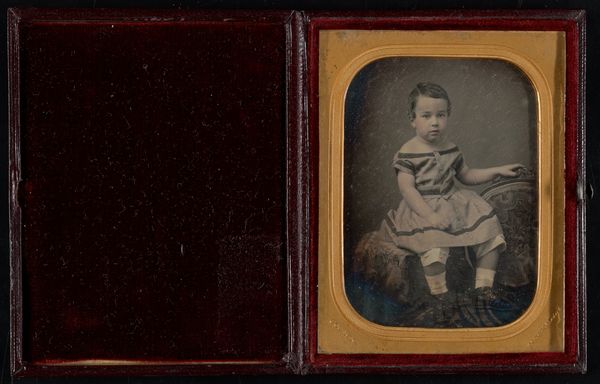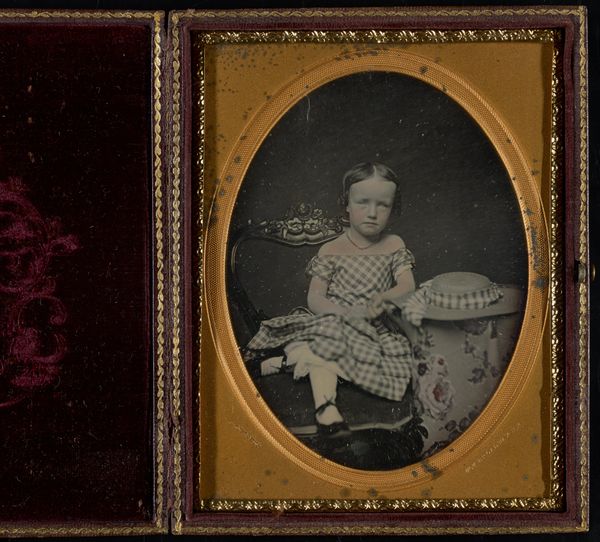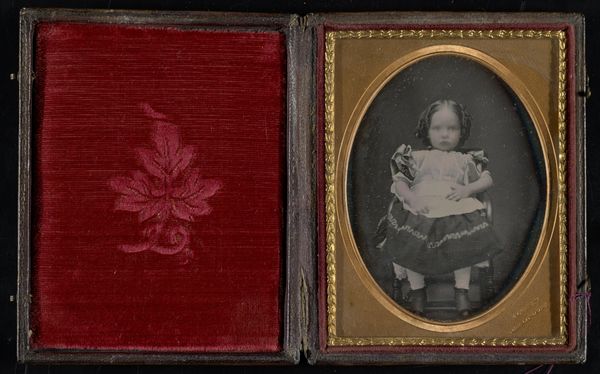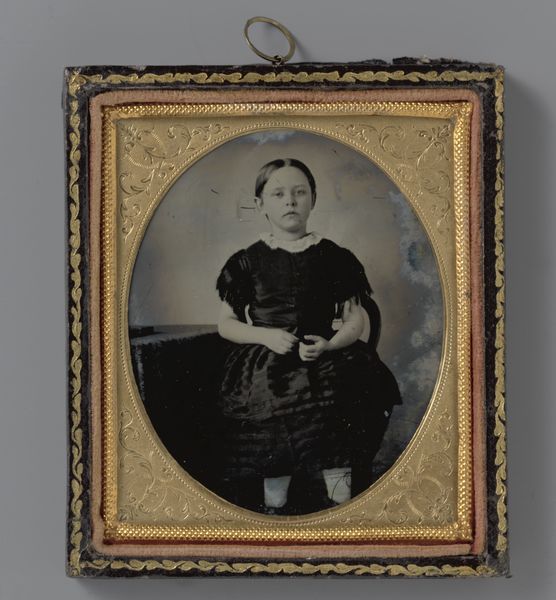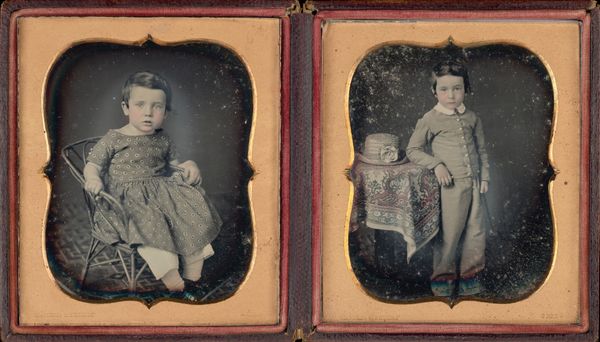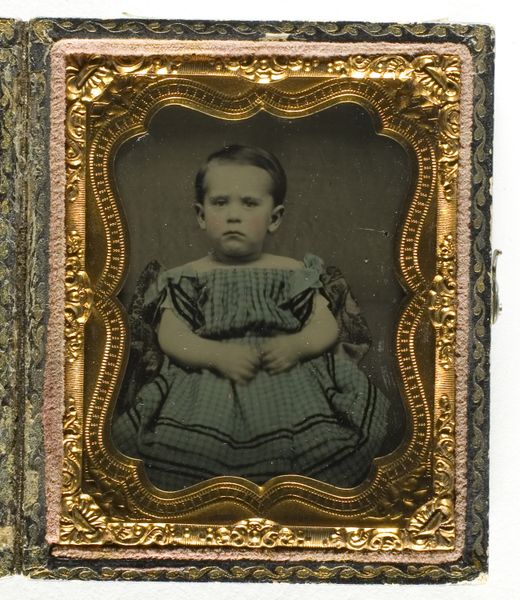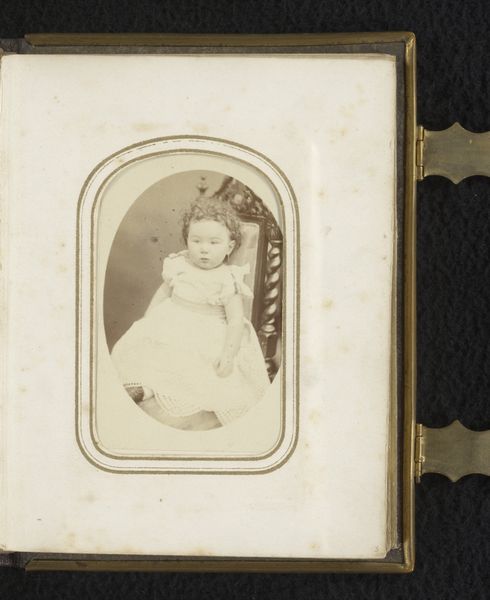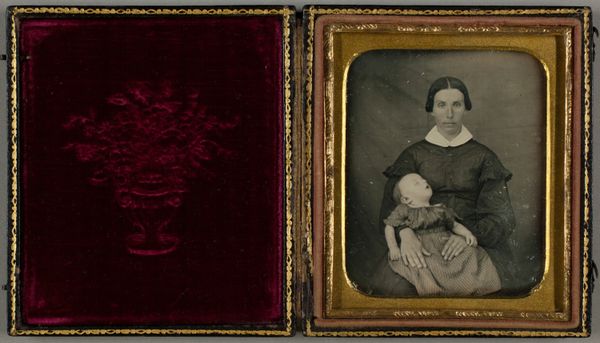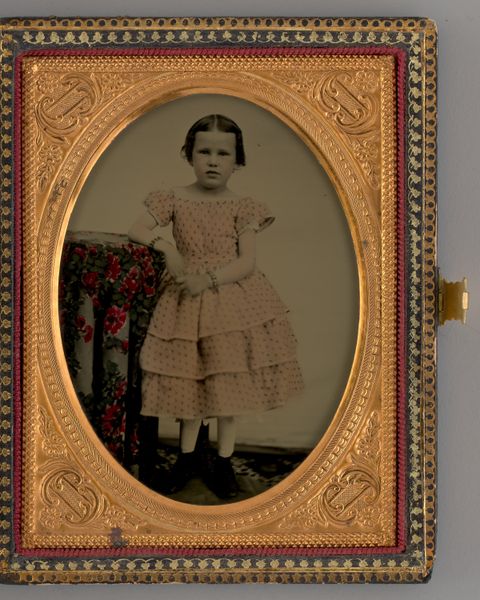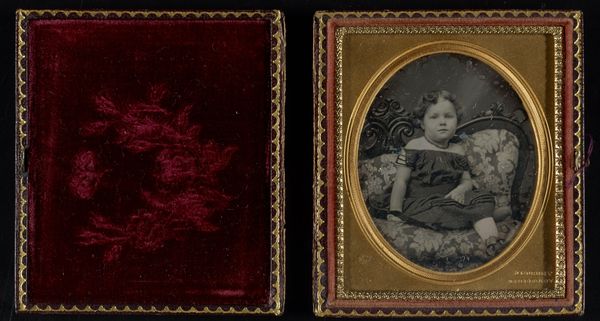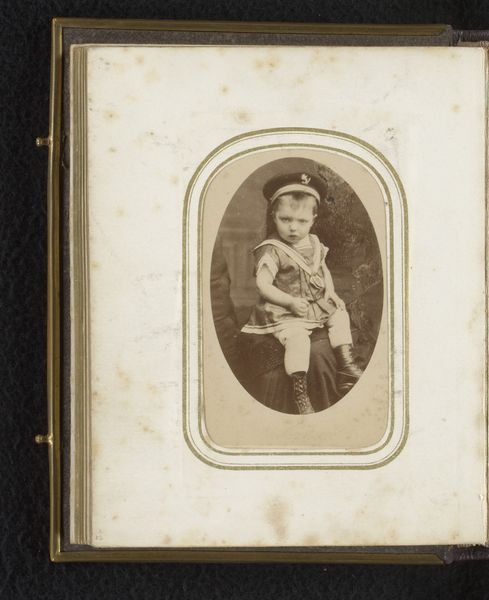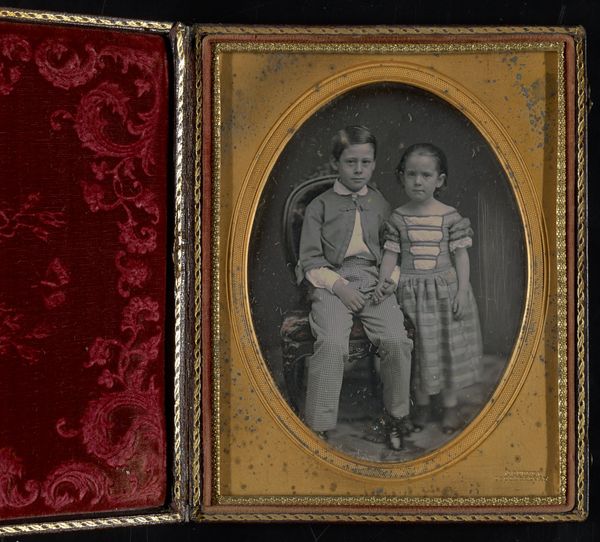![Untitled [portrait of a young girl] by Jeremiah Gurney](/_next/image?url=https%3A%2F%2Fd2w8kbdekdi1gv.cloudfront.net%2FeyJidWNrZXQiOiAiYXJ0ZXJhLWltYWdlcy1idWNrZXQiLCAia2V5IjogImFydHdvcmtzL2Y5YzczNzE3LTNkNGQtNDBmZC1iNmVkLWMzNDI5ZDM3YzUxZi9mOWM3MzcxNy0zZDRkLTQwZmQtYjZlZC1jMzQyOWQzN2M1MWZfZnVsbC5qcGciLCAiZWRpdHMiOiB7InJlc2l6ZSI6IHsid2lkdGgiOiAxOTIwLCAiaGVpZ2h0IjogMTkyMCwgImZpdCI6ICJpbnNpZGUifX19&w=3840&q=75)
daguerreotype, photography
#
portrait
#
16_19th-century
#
daguerreotype
#
photography
#
united-states
#
genre-painting
Dimensions: 5 1/2 x 4 1/4 in. (13.97 x 10.8 cm) (image)6 x 4 5/8 x 13/16 in. (15.24 x 11.75 x 2.06 cm) (mount)
Copyright: Public Domain
This portrait of a young girl is a daguerreotype, made by Jeremiah Gurney sometime in the mid-19th century. This photographic process involves creating an image on a silvered copper plate, polished to a mirror finish. The reflective surface gives the portrait a unique presence. It's more than just an image; it’s a captured moment made tangible through a complex chemical process. The sharpness of detail, from the girl's dress to the set of her mouth, is achieved by skilled manipulation of light and chemistry. Daguerreotypes, though celebrated as scientific marvels, depended on skilled labor. Artisans were needed to prepare and polish the plates. They were also needed to carefully control the mercury fumes used in development. Looking at this image, consider the convergence of science, craft, and social context that allowed it to exist. It’s a blend of technical innovation and skilled labor that challenges distinctions between fine art and craft.
Comments
minneapolisinstituteofart almost 2 years ago
⋮
Invented by the Frenchman Louis-Jaques-Mandé Daguerre in 1839, daguerreotypes were one of the earliest photographic processes. A daguerreotype is a silver-coated copper plate that is developed by mercury vapors after exposure of several seconds to light in the camera. The somewhat stiff facial expression of the sitter may be due to the long exposure. Often sitters were supported by a special stand to keep their heads still and prevent a blurry image. Daguerreotypes are typically highly detailed with a reflective surface. Each one is unique because there is no negative as with film processes, and they were used almost exclusively for portraiture. To highlight their subject’s individual character and presence, Jeremiah Gurney and other daguerreotype photographers meticulously framed their photographs much like other intimate portrait forms of the day, such as painted miniatures, carved cameos, or silhouettes.
Join the conversation
Join millions of artists and users on Artera today and experience the ultimate creative platform.
